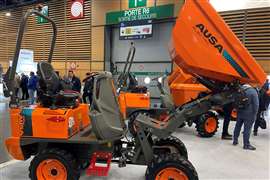Sellafield looks to strengthen demolition supply chain
06 November 2014

Sellafield wants to attract more and new players to the massive decommissioning and demolition of the Sellafield nuclear power plant in the UK.
Speaking at the World Demolition Summit in Amsterdam, Jeremy Hunt, head of projects for site remediation and decommissioning at Sellafield, said that the aim was to build the project’s supply chain and “accelerate the demolition over the coming decades”. He said Sellafield was “very keen to increase the number of demolition contractors working at the site.”
Sellafield is now getting ready for the next framework contracts for the project and Mr Hunt said they wanted to enter into long term partnerships with contractors, “but we are very keen for new players to come into the industry.” He said Sellafield favoured direct contractual relationships rather than working through management contractors.
Sellafield has already let two Decommissionng Framework Agreements (DFA1 and 2). DFA 2 comes to an end next year and will be replaced by a third phase, called Decommissioning Delivery Partner (DDP). There are three parts to the DDP framework, with the first concerning demolition and decommissioning and valued at around £100 million.
Mr Hunt said that there will be four main contracts let to major contractors or consortia, with small demolition companies having opportunities to work with these consortia. He said that one of the criteria for evaluating tenders will be how these consortia will develop the supply chain.
Work on the massive decommissioning and demolition project has been underway for several decades and is not scheduled to be fully complete by 2120 – more than 100 years from now. “We have made huge strides already”, he told the delegates, “but there are still huge things to be done.”
Mr Hunt said the total cost of the project would be around £25-30 billion; “It’s a lot of money, but in the grand scheme of national infrastructure projects it’s not that significant. Projects like HS2 [the proposed high-speed railway between London and Manchester] and the Olympics can be £10 billion or more.
“I’m not downplaying the cost, it’s a large number, but in the context of what Sellafield has done over the last 60 years – I’ll leave you to be the judge.”
He also highlighted some of the key technical issues of the project, one being the potetial use of tower cranes on the demolition of a 120 m high diffuser tower. Mr Hunt said that tower cranes had been considered high risk in the past, but that there had been a cultural change at Sellafield concerning the use of cranes on site.
Another challenge has been the decontamination of radioactive materials such as concrete. He said Sellafield was using a whole range of techniques to remove contaminated layers, including hydrogen jetting, mechanical shaving and acids.






